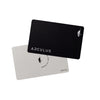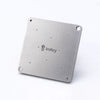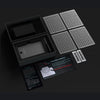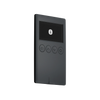
Maintaining the security of your digital assets is quite vital in the always changing realm of NFTs (Non-Fungible Tokens). NFTs are unlike conventional cryptocurrencies in that they are unique objects ranging from digital art to music and collectibles, which makes theft especially likely. Investing in a hardware wallet is absolutely essential if we are to protect these precious resources. Let's investigate why safeguarding your NFTs calls for a hardware wallet—like the Ledger Nano S, Trezor, or KeepKey.
Understanding NFTs and Their Value
Fast rising in popularity, NFTs are becoming highly sought-after digital assets. Unique tokens kept on the blockchain, they identify ownership of a certain object. NFTs are rare and valuable as unlike fungible assets they cannot be replicated. Purchasing an NFT means you are acquiring proof of ownership; the blockchain guarantees that this ownership is unique and cannot be copied. Like with classic art or collectibles, the value of an NFT frequently depends on its demand and scarcity.
Consider Twitter creator Jack Dorsey, whose first-ever tweet sold as an NFT for an incredible $2.9 million. Though the tweet itself might not seem significant, its ranking as the first on the platform makes it an incredible and much sought-after digital tool. The demand of safeguarding NFTs against internet threats rises in tandem with their rising popularity.
The Risks of Online NFT Storage
Although it would appear handy, storing NFTs online has serious hazards. By means of phishing scams or security breaches, cybercriminals can readily pilfers NFTs from centralized platforms. These hazards draw attention to the need of a safe storage option.
Cyberattacks and Security Breaches:
To pilfers NFTs, hackers typically target NFT platforms—including online markets. Should they be able to access your online wallet, they can quickly pilfers your valuables.
Phishing Scams:
Common threats are phishing assaults, in which hackers fool consumers into divulging their login information via bogus websites or emails. They can pilfers your NFTs undetectably once they get access to your account.
Centralised Platform Vulnerabilities:
Data breaches especially target centralised platforms, which could reveal private data including your NFTs and personal information. The need of a strong security solution is shown by the fact that even distributed platforms are not free from these dangers.
Why Choose a Hardware Wallet?
A hardware wallet is a physical tool that holds your private keys offline, so giving your NFTs maximum protection. Keeping your NFTs off shields them from phishing schemes, hacking attempts, and other online hazards. Designed with security as their first concern, hardware wallets as the Ledger, Trezor, and KeepKey include encryption, PIN codes, and two-factor authentication to guarantee only you can access your private keys.
Hardware wallets also provide a backup and recovery choice, therefore enabling you to restore your NFTs even should the device be stolen or lost. Given that this function offers an additional degree of security for your digital assets, it is especially crucial.
Getting Started with a Hardware Wallet
Setting up a hardware wallet for security of your NFTs is simple if you have decided upon it. Based on your goals and budget, first decide on a respectable hardware wallet brand—Ledger Nano S, Trezor, or KeepKey. After you bought your wallet, install the required updates and software using the setup directions.
Choose the relevant blockchain network then to set your wallet for NFT storage. Generating a receiving address on the hardware device will then enable you to send your NFTs from your online wallet to your hardware wallet.



















































